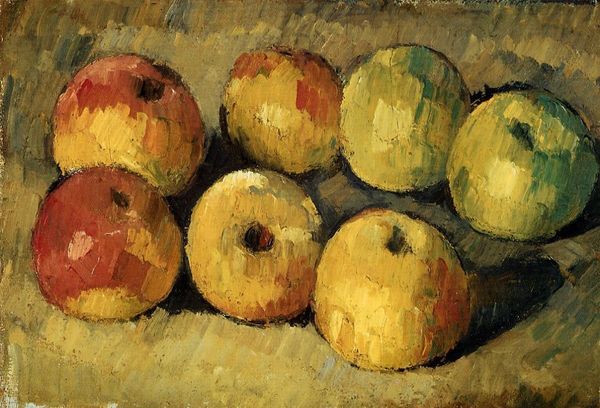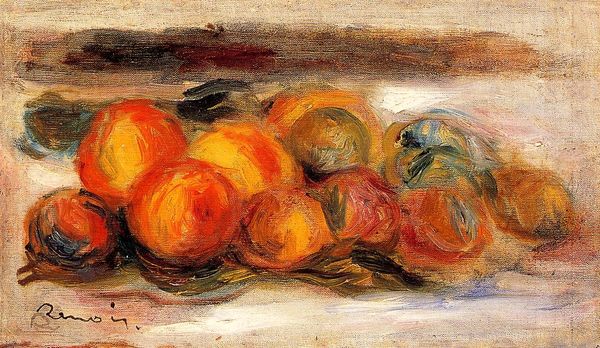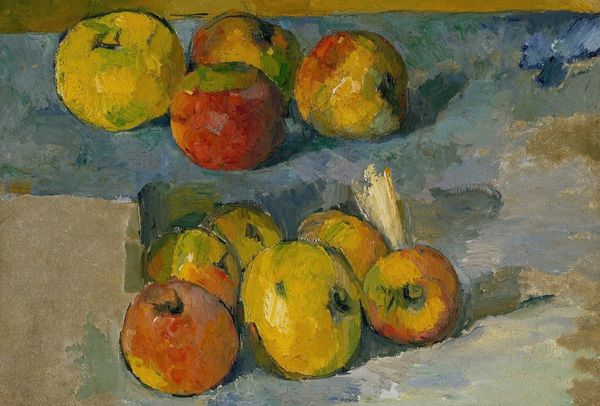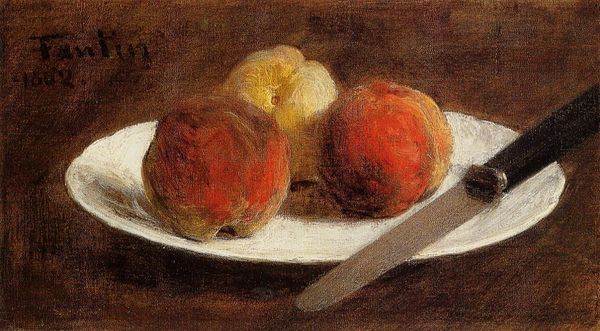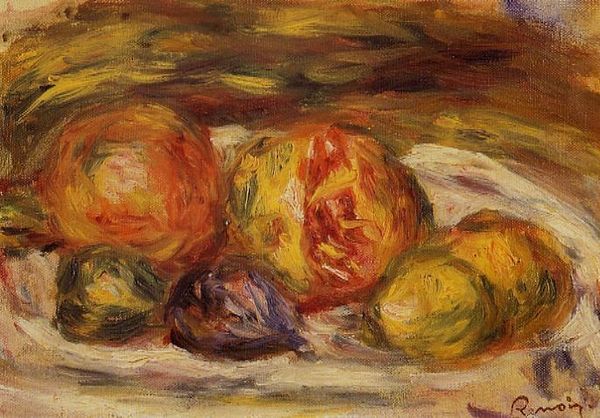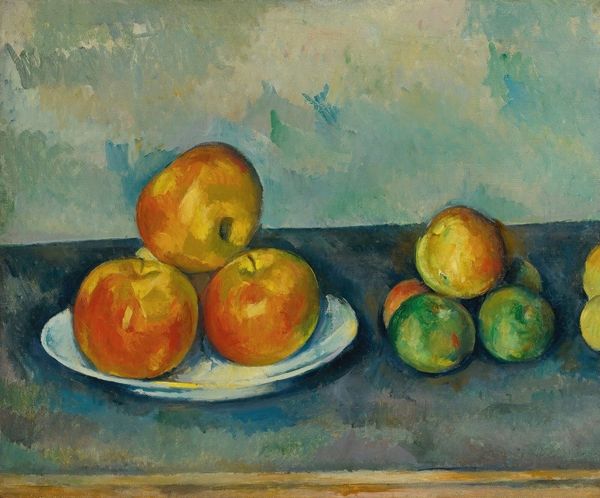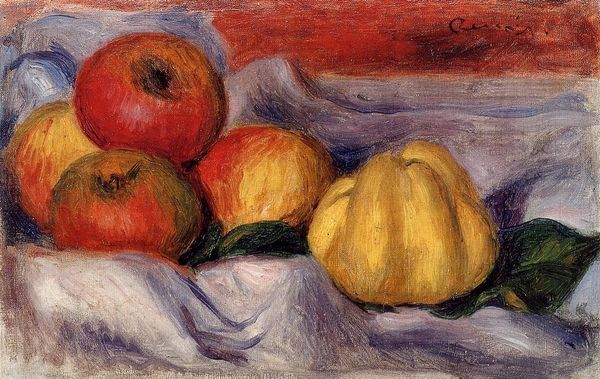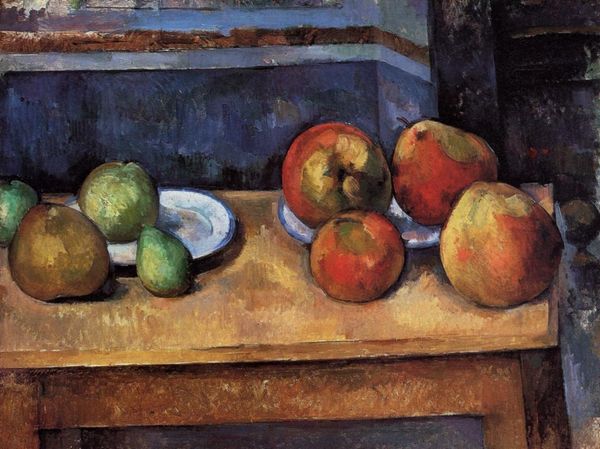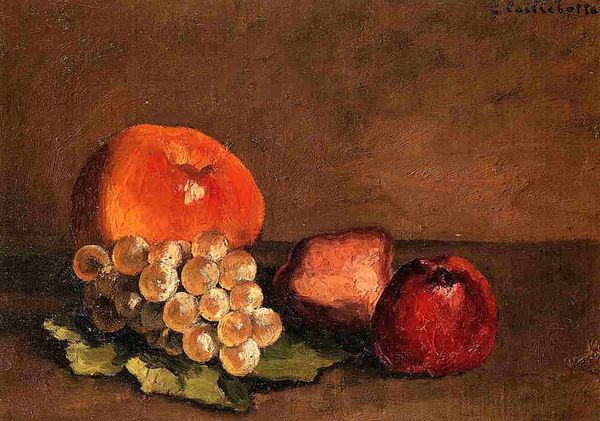
tempera, painting, oil-paint, impasto
#
narrative-art
#
tempera
#
painting
#
oil-paint
#
oil painting
#
impasto
#
post-impressionism
Copyright: Public domain
Curator: Looking at "Four Apples," a modest oil painting by Paul Cézanne dating back to 1881, now privately held, one is struck by its… unconventional composition. What do you make of it initially? Editor: Stark. It’s almost brutally simple. These apples are so solid, grounded… and the visible brushstrokes, the thickness of the oil paint… it makes them feel almost tangible, as though I could reach out and heft them. Curator: That tangibility, the "realness," as it were, is key to Cézanne's project. Remember, he's painting at a time when the Salon dictates what art *should* be, which is idealized, highly finished scenes. Cézanne's moving in the opposite direction, exploring the very nature of perception through this kind of humble subject matter. Editor: And that humbleness speaks volumes. There's a clear focus on the materiality here— the pigment itself, applied so thickly you see every stroke of labor. The creation is front and center. I find myself thinking about how those apples might have been sourced, the economic realities underlying even such a commonplace scene. Curator: Precisely! Think about the evolving art market, too, and who had access to exhibiting—or buying—these paintings at this stage in art history. This “still life” defies the expectation for paintings to depict glorious or narrative driven imagery. It demands contemplation, almost as a social leveling. Editor: And the subtle asymmetry adds so much. Each apple different, each made up of imperfect applications of pigment. I'm compelled by that honest approach. It speaks of use, labor, a lack of pretension. Curator: I think we often forget the societal shock that this "ordinariness" represented. Consider it in relation to the political shifts occurring at the time, as the bourgeois took power and pushed down the previously established class structures and social narratives within art itself. Editor: Right. There’s a subtle revolution at work, even in these four simple apples! It reframes what deserves artistic attention and highlights, essentially, the process of making art. A rebellion against the "high art" tradition. Curator: I appreciate how this piece showcases how process can change the culture of imagery itself. Editor: It brings the focus directly to production. In this way, Cézanne’s “Four Apples” prompts me to question what other traditional crafts can tell us.
Comments
No comments
Be the first to comment and join the conversation on the ultimate creative platform.
